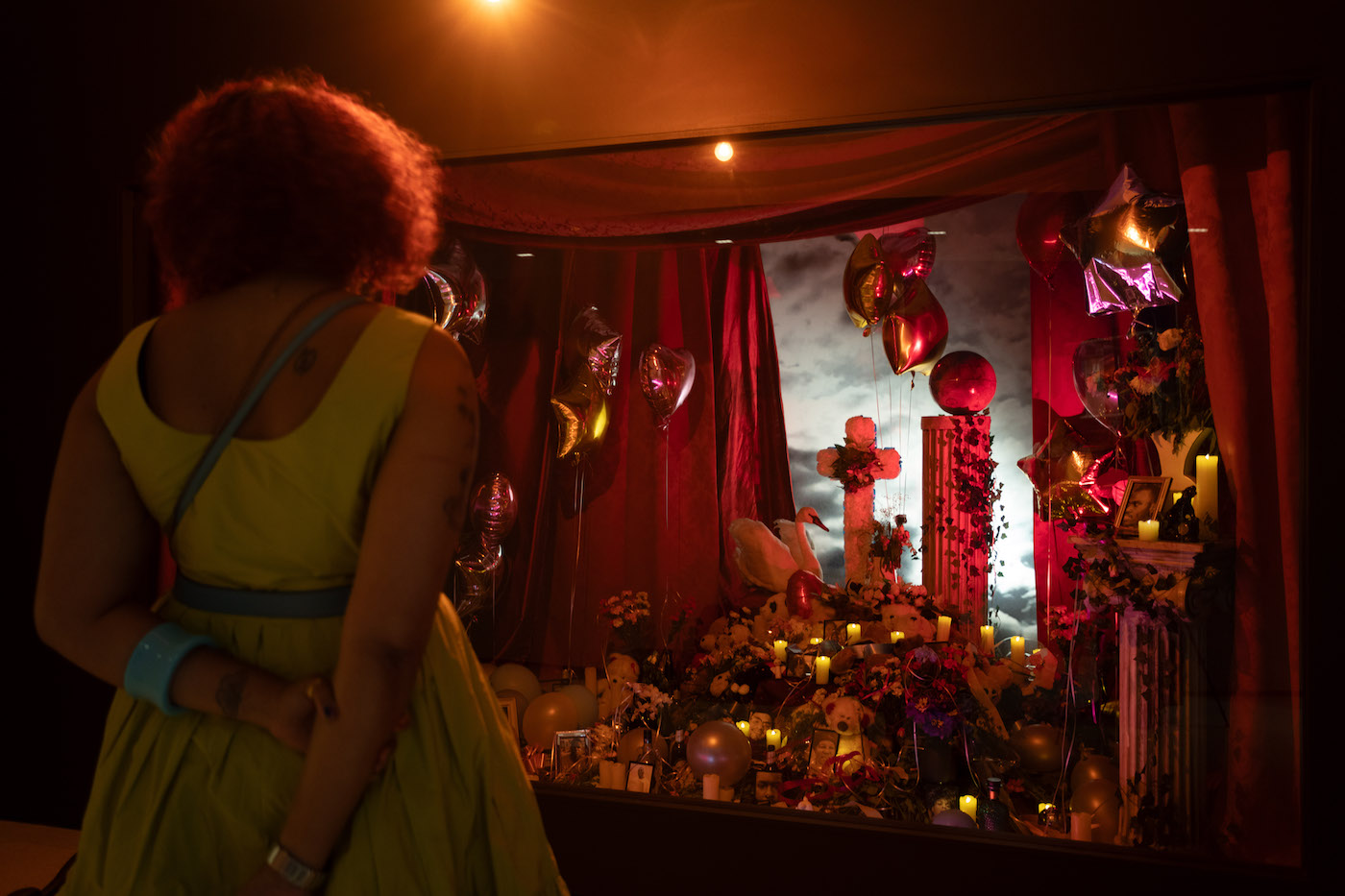Carrie Mae Weems: Reflections for Now
A retrospective of the artist's versitile and flourishing career is on display at the Barbican until the 3rd September.
In the much-parodied painting 'Wanderer Above the Sea of Fog', Caspar David Friedrich depicts a well-dressed gentleman standing defiantly atop a mountain. The anonymous wanderer looks away from the viewer, casting his eyes out over the foggy mountain range - a harsh and unrelenting landscape dominated by man, tamed, and bent to his whims. In her ongoing series 'Museums', Carrie Mae Weems poses herself in a black silk gown, standing defiantly in front of major cultural institutions around the world, cultural institutions all-too-often built on the systematic exploitation and exclusion of people of colour.

Friedrich's painting speaks to the status quo, to patriarchal domination and to exploitation of the natural world. Using a similar composition, Weems' series speaks to radical political action, dismantling of the patriarchy and structural racism, and to not just the acceptance, but celebration of the Black body in all spaces. In the artist's own words: “This woman can stand in for me and for you; she can stand in for the audience, she leads you into history…I think it’s very important that as a Black woman she’s engaged with the world around her; she’s engaged with history, she’s engaged with looking, with being.”

The architecture of the spaces that Weems is standing down is a key part of the narrative in this series. These museums, places of supposed enlightenment for humankind, are built instead like impenetrable fortresses, reinforcing the idea that knowledge and art is to be guarded, and excluded from certain groups of people. This makes the stand-off all the more impressive, especially amidst a growing public consciousness of the theft and exploitation at the foundation of the western museum as an institution.


This is just one of the series of works on display in the retrospective of Carrie Mae Weems' career now showing at the Barbican in London - the largest collection of Weems' work in the UK to date. The subjects of her work vary from portraiture, to still life, to architectural photography, though are all strongly connected by the concurrent themes of social justice, radical activism, identity, and self-reflection.


Other works on display include a powerful series of portraits of formerly enslaved African Americans - originally taken to build a body of evidence for the pseudo-science of eugenics. Weems applies a red tint to the Daguerreotype portraits, adding warmth and vitality. A circular frame recalls the camera lens and emphasises the inhuman glare these people were subjected to, and text overlays written by Weems highlight the injustices of the legacy of slavery. The combined effect is a damning indictment of institutional racism that returns a degree of humanity to people who have had theirs so brutally stolen from them.

Also on display is a diorama of personal tributes to some of the Black people (often children) killed by police in America and abroad. Set up to resemble the waxwork dioramas of America's natural history museums, the piece is a stark condemnation of state violence against people of colour on two levels: the immediate visceral violence of police killings, and the more insidious violence of capitalist-colonialist exploitation. The seemingly endless list of names attributed in the diorama serves as a reminder for the sheer scale of injustice exacted upon people of colour, to this very day.


Though her work challenges the viewer to confront these difficult themes, Weems does so with a glimmer of hope for the future. Her series of portraits of leading figures in Black rights activism celebrate the progress, however glacial, made through various civil rights movements. They ensure that the sacrifices made by these great leaders won't be forgotten by history.

This sense of hope is clear in Weems' video work, too. 'The Shape of Things' is a video collage in cyclorama format, layering footage of police protests, insurrections and rioting to build a bleak picture of contemporary America. Yet interspersed into this footage is a performance by five dancers and the choreographer Okwui Okpokwasili, slowly moving in the pouring rain. When placed together, these seemingly contrasting portraits of America show the determined spirit and grace of social justice activists in the face of insurmountable pressure from the power structures that seek to oppress them.

Unlike that anonymous wanderer with his back turned to the viewer, in her Kitchen Table series, Carrie Mae Weems looks straight out at the viewer. She confronts our relentlessly abrasive world head on, but by turning to look back at us, she invites us to pick up the gauntlet and join the fight for social justice ourselves. She has shown us the state of things, the cruelty and the absurdity of contemporary life, and is gently coaxing us to do something about it. This retrospective serves as evidence of her versatility and the clarity of her message through her decades-long and still flourishing career.

'Carrie Mae Weems: Reflections for Now' is on display at the Barbican until the 3rd September, so make sure to catch it in its last couple of weeks.
By Robert Waters